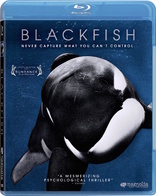Blackfish Blu-ray Movie
HomeBlackfish Blu-ray Movie 
Magnolia Pictures | 2013 | 83 min | Rated PG-13 | Nov 12, 2013Movie rating
7.7 | / 10 |
Blu-ray rating
| Users | 4.5 | |
| Reviewer | 4.5 | |
| Overall | 4.5 |
Overview
Blackfish (2013)
In 2010, captive killer whale Tilikum killed his trainer Dawn Brancheau in front of horrified onlookers at the SeaWorld park in Orlando, Florida. SeaWorld was subsequently sued by OSHA, resulting in a court ruling that required it to change its practices regarding trainers. This documentary explores the history of SeaWorld's popular killer whale shows through archival footage and interviews with former trainers and park staff, uncovering startling facts behind Dawn Branchaeu's death, including other trainers killed by the same whale.
Starring: Mark Simmons (XIV), Dawn Brancheau, Howard Garrett, Christopher Porter, Dave DuffusDirector: Gabriela Cowperthwaite
| Documentary | Uncertain |
| Drama | Uncertain |
Specifications
Video
Video codec: MPEG-4 AVC
Video resolution: 1080p
Aspect ratio: 1.78:1
Original aspect ratio: 1.85:1
Audio
English: DTS-HD Master Audio 5.1 (48kHz, 24-bit)
Subtitles
English SDH, Spanish
Discs
25GB Blu-ray Disc
Single disc (1 BD)
BD-Live
Playback
Region A (C untested)
Review
Rating summary
| Movie | 4.5 | |
| Video | 4.5 | |
| Audio | 4.5 | |
| Extras | 4.0 | |
| Overall | 4.5 |
Blackfish Blu-ray Movie Review
Not So Cuddly After All
Reviewed by Michael Reuben October 30, 2013On February 24, 2010, trainer Dawn Brancheau was killed by an orca (or "killer whale") named Tilikum during one of the popular "Shamu" shows at the SeaWorld theme park in Orlando, Florida. Horrified spectators were quickly ushered out, and emergency services were called. It took hours, and the efforts of multiple trainers and emergency personnel, to retrieve Brancheau's ravaged body from Tilikum, who would not relinquish it. Her autopsy report makes for grim reading. The story became national news. Documentary filmmaker Gabriela Cowperthwaite was intrigued by the reports. A fan of SeaWorld, and a parent who'd taken her children to see "Shamu", she sensed in Brancheau's story the potential for a film about the complex human relationship with the natural world, especially when we think we have it domesticated and under control. Traces of that original inspiration remain in Blackfish, which was nominated for a Grand Jury Prize at the 2013 Sundance Film Festival, but as Cowperthwaite began gathering material, she discovered that she was making a different kind of film. Among other things, Blackfish is the story of a coverup. It turned out that Dawn Branchaeu wasn't the first trainer to be killed by an orca trained at SeaWorld. She wasn't even the first trainer to be killed by Tilikum. Once former trainers began to come forward, and once the federal Occupational Health and Safety Administration ("OSHA") sued SeaWorld, a history of consistent disregard for trainers' safety and the animals' well-being began to emerge. With a less delicate touch, Blackfish could have been a muckracking exposé of corporate greed, which is how SeaWorld has tried to portray it. But an essential quality of Cowperthwaite's film is how much she hangs back to let the participants tell the story, no doubt because she recognized that the facts were devastating on their own, without any need for editorializing. Maybe, too, that's why SeaWorld chose not to participate and simply trashed the film in general terms. If they'd shown up, they would have had to answer a lot of uncomfortable questions.
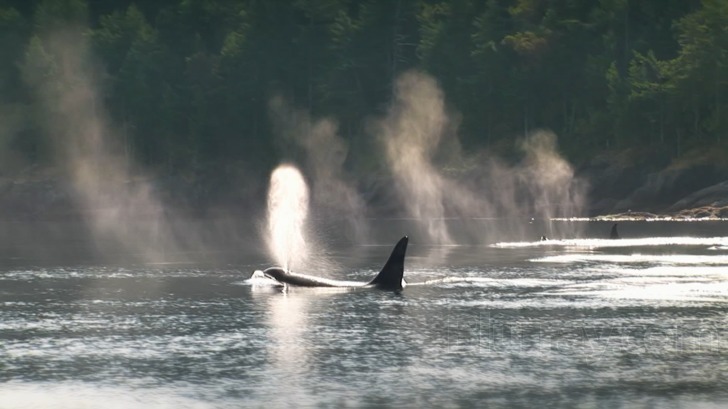
Blackfish opens with video images of trainers performing "Shamu" stunts, accompanied by the chilling emergency calls made on February 24, 2010. You can sense the 911 operator struggling to process what she's hearing. Cowperthwaite then uses a variety of interviews and video footage to develop several interwoven strands that provide essential background to the fateful moment when Tilikum attacked his long-time trainer. One essential element is the biology and social behavior of killer whales in their natural habitat, a subject much better understood today than when orca exhibits first became popular some forty years ago. Intelligent creatures capable of complex vocalizations that some scientists believe to be comparable to language, orcas live their entire lives in large schools with elaborate social structures. Young orcas, or "calves", stay with their mothers for years. MRI scans reveal that their brains rival humans' in complexity. Although they hunt other animals, orcas in the wild do not attack humans; there isn't a single case on record. The exhibitor mentality discounts the intricacies of orca existence, treating the animals as fungible livestock. One of Cowperthwaite's most remarkable interviews is with John Crowe, an elderly diver and a veteran of one of the earliest orca "harvests" in the ocean near Washington State, when the animals were first being gathered for theme parks and exhibits. Crowe describes, with a haunted demeanor, how he and his co-workers separated the calves en masse from their school, killing several in the process. Crowe says it was the worst thing he's done in his life. The State of Washington had a similar reaction, banning the hunters from its coastal waters. (They immediately relocated to Iceland.) The same indifference to the orcas' condition characterized many of the facilities where the animals were exhibited. Pools and pens were often too small for the animals to do more than lie motionless on the surface for hours at a time. Orcas from entirely different schools were thrown together willy-nilly, resulting in aggression and conflict, much like in a human prison population. One particularly undersized park was Sealand in British Columbia, Canada, where Tilikum was first shown and where, on February 21, 1991, he killed a trainer named Keltie Byrne. To this day, the official account, which prevails even at Wikipedia, is that Byrne fell into the tank. However, Cowperthwaite tracked down two eyewitnesses, Corinne Newell and Nadine Kallen, who were visiting the park, saw the entire incident and describe in detail how Tilikum dragged Bryne into the tank and pulled her under the water, as she struggled and screamed for help. No one from Sealand or any official or supervisory authority ever sought to interview them. Sealand closed, and Tilikum was acquired by SeaWorld, which assured the owners of Sealand that he would only be used for breeding. But SeaWorld proceeded to put Tilikum into their shows, and this leads to another strand in Blackfish, and perhaps the most infuriating. If any corporation should have the scientific expertise to understand the risks created by repeatedly traumatizing a huge and powerful predator—by, e.g., intermingling social types so that the creatures attack each other, or by forcibly separating young calves from their mothers because another park needs a new specimen—it should be SeaWorld. And yet the company not only engages in these practices, but it then proceeds to recruit hundreds of eager young athletes as trainers, and then puts them in the water with these maladjusted predators, despite the knowledge that they are risking their lives. SeaWorld doesn't even teach its trainers the basics of marine biology. Cowperthwaite presents clip after clip of trainers misinforming visitors to SeaWorld about something so basic as an orca's life expectancy. (Thirty years, according to the trainers, because that's how long they typically live in captivity. In the wild, it's eighty years.) Incidents of attack and aggression by killer whales against trainers are either hushed up or spun as "playfulness". In the case of Dawn Branchaeu, SeaWorld tried to claim that Tilikum was simply grabbing for her ponytail, and things got out of hand—which is hard to square with both the videotaped record and the fact that the whale only relinquished Brancheau's body after her arm had come away because he'd swallowed it. After OSHA's lawsuit, SeaWorld was required to separate trainers from orcas by a net. But SeaWorld is appealing. After all, where's the thrill of a "Shamu" show if the trainer isn't at risk?
Blackfish Blu-ray Movie, Video Quality 
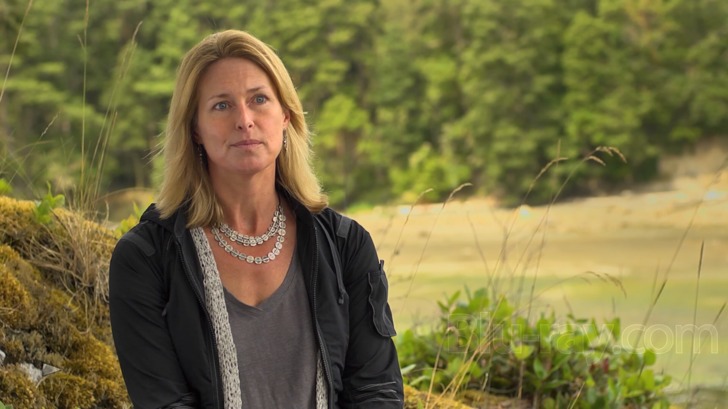
The interviews for Blackfish were shot on HD video (with Canon 5D cameras, according to IMDb) by two documentary cinematographers, Jonathan Ingalls and Chris Towey, and that footage is clear, sharp and detailed on Magnolia Home Entertainment's 1080p, AVC-encoded Blu-ray. The remaining portions of Blackfish vary according to the quality of the source, much of which comes from standard definition home video recorded by tourists and park personnel or from TV archives of SeaWorld advertising. On one ad that is in rough shape, Cowperthwaite notes in the commentary that she didn't mind, because it provided variation in the visual texture. Indeed the alternation between HD present-day interviews and older, grainier video contributes to the sense of then-and-now that informs the frequent impression of dialogue between the former trainers' younger and older selves. At 83 minutes, Blackfish resides comfortably on a BD-25, even with all the extras in 1080p. The average bitrate of 18.07 Mbps would be low for a feature film, but for a documentary composed of talking heads and standard-definition inserts, it is sufficient.
Blackfish Blu-ray Movie, Audio Quality 
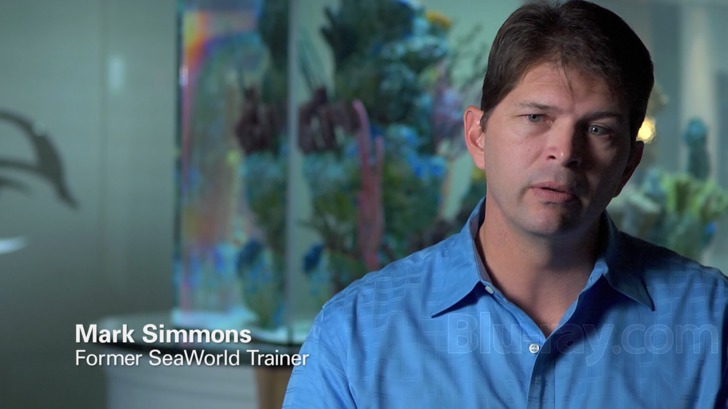
The important function for the lossless DTS-HD MA 5.1 track is to deliver the interviewees' voices with clarity, and it certainly does so. The archival footage has audio of varying quality, and I suspect that what we hear is the best that can be extracted from the sources. Jeff Beal (House of Cards) has composed a moody, often mournful score that has been subtly wrapped into the surrounds to provide an elegy for both the human lives lost and the many sea creatures sacrificed in the pursuit of theme parks.
Blackfish Blu-ray Movie, Special Features and Extras 
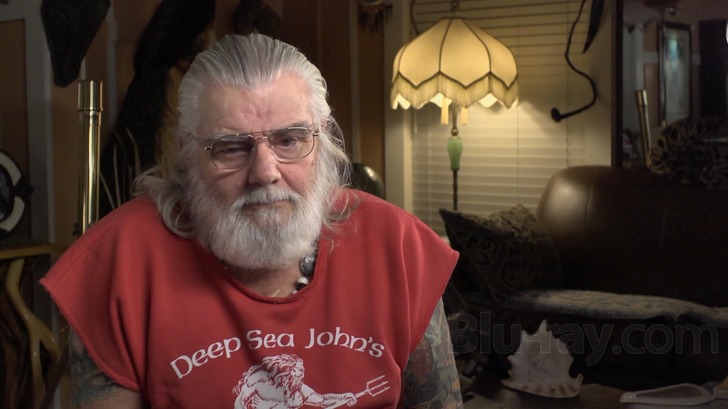
- Commentary with Director Gabriela Cowperthwaite and Producer Manny Oteyza: Cowperthwaite does most of the talking, with occasional contributions from Oteyza. She describes the development of the film and the often laborious process of tracking down the participants. She also describes some of the subjects she chose not to pursue for the sake of maintaining focus (notably the treatment of other species at SeaWorld).
- Kanduke with Former Trainer Dean Gomersall (1080p; 1.78:1; 2:18): One of the film's main participants recounts the graphic death of one of the whales under his care from what was later determined to be encephalitis.
- "Death by Mosquito" in Marine Parks with Former Trainer John Jett, Ph.D. (1080p; 1.78:1; 3:02): Another former SeaWorld trainer discusses the risks to whales in captivity from mosquito-born pathogens (including encephalitis).
- Orca Teeth Show the Stress of Orcas in Captivity with Jeffrey Ventre, M.D. (1080p; 1.78:1; 2:51): Also a former trainer, Ventre discusses how orcas break their teeth on the steel gates used for training purposes and also to separate them in captivity. The treatment necessitated by the breakage leaves the animals at risk of cavities, inflammation and infection, which Ventre believes contributes to shortening the life span of captive orcas.
- Recollections of a Former SeaWorld Trainer with John Hargrove (1080p; 1.78:1; 5:11): Hargrove resigned his position in 2012 after fourteen years with SeaWorld so that he could be interviewed for Blackfish. His recollections include an incident in which an orca with which he had a rapport helped him to safety when he was injured.
- The Truth About Wild Whales: Interview with Dr. Naomi Rose (1080p; 1.78:1; 4:40): A marine biologist, Dr. Rice contrasts the known behavior of orcas in the wild with that of orcas in captivity.
- Alternatives to Captivity (1080p; 1.78:1; 2:17): Further comments by Dr. Rose.
- A Note from Gabriela Cowperthwaite (1080p; 1.78:1; 8:26): The director's comments largely overlap her commentary, but the novel element is the accompanying behind-the-scenes footage of Cowperthwaite and her crew making the film.
- Trailer (1080p; 1.78:1; 2:25).
- Also from Magnolia Home Entertainment: The disc includes trailers for Good Ol' Freda, Big Star: Nothing Can Hurt Me, A Hijacking and Europa Report, as well as a promo for AXS TV. These also play at startup, where they can be skipped with the chapter forward button.
- BD-Live: As of this writing, attempting to access BD-Live gave the message "Check back later for updates".
Blackfish Blu-ray Movie, Overall Score and Recommendation 
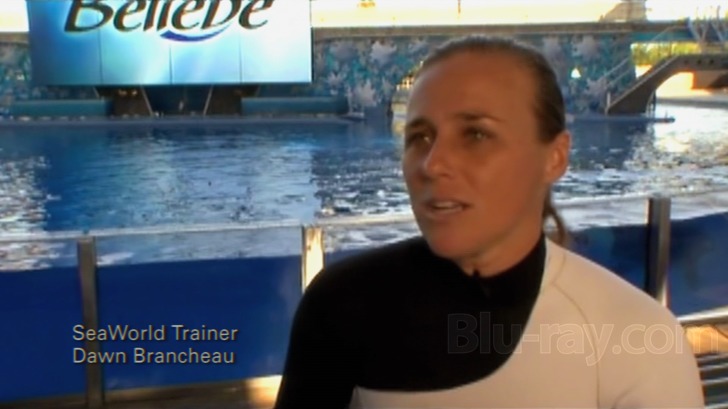
SeaWorld denounced Blackfish for not being "fair and balanced", but in fact Cowperthwaite gives substantial time to former trainer Mark Simmons, who vigorously denounces any attempt to use the deaths caused by Tilikum as support for an effort to close down marine parks or end the practice of holding orcas or other potentially dangerous creatures in captivity. Instead, he argues for changes in how the animals are treated, housed and trained. As Cowperthwaite notes in her commentary, in effect Simmons was left to speak for SeaWorld, because SeaWorld refused to participate. By so doing, they only made themselves look more guilty, given what the record establishes they clearly knew. Cowperthwaite was as "fair and balanced" as SeaWorld allowed her to be. After watching her film, you may never feel the same about the "splash zone" again. Highly recommended.
Similar titles
Similar titles you might also like

Dawson City: Frozen Time
2016

An Inconvenient Sequel: Truth to Power
2017

Life
BBC / Narrated by David Attenborough
2009

Voyage of Time
2016

Fire at Sea
Fuocoammare
2016

Human Planet: The Complete Series
BBC
2011

Jodorowsky's Dune
2013

Dinosaur 13
Director's Cut
2014

Waiting for "Superman"
2010

Journey to the South Pacific 4K
IMAX Enhanced
2013

Forks Over Knives
2010

Meru
2015

Galápagos 3D
IMAX
1999

Enron: The Smartest Guys in the Room
2005

Visitors
2013

Dear Zachary: A Letter to a Son About His Father
2008

Where to Invade Next
2015

Tim's Vermeer
2013

Roger & Me
1989

This Is Cinerama
Deluxe Edition
1952
